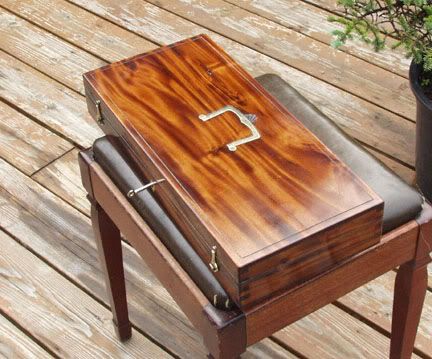Genuine Mahogany, which is what I suggest would have/might have been used on some shotguns is a different species all together. Most genuine mahogany is now protected under various export bans and came almost exclusively from Central/South America (street names include Honduras or South American Mahogany).
It is now "farmed" for export, but it is faster grown in a plantation environment so does not come with the same quality/strength that the natural/old growth stuff would have displayed even 50 years ago.
There is also a "whole whack" (over 100 species) of Philippine Mahogany which sells under the names Meranti and Luan to name a couple. These are not even hardwoods at all, they are tropical cedars - so a softwood.
Wise words to be heeded.
For several years I corresponded with an American in Peru who is in the business of harvesting and exporting exotic woods to the U.S. He told me many of the woods being shipped to the U.S. these days are being illegally harvested and exported. In fact, it is almost impossible to know what kind of wood you are getting when you buy something from an importer. And, some are highly, that is HIGHLY toxic. When one buys "mahogany" these days it could be any one of many different species or sub-species. Reason enough for me to not consider it for a gun stock. However, I have done some woodworking with what I know to be real mahogany and believe it would be suitable for gun stocking.







